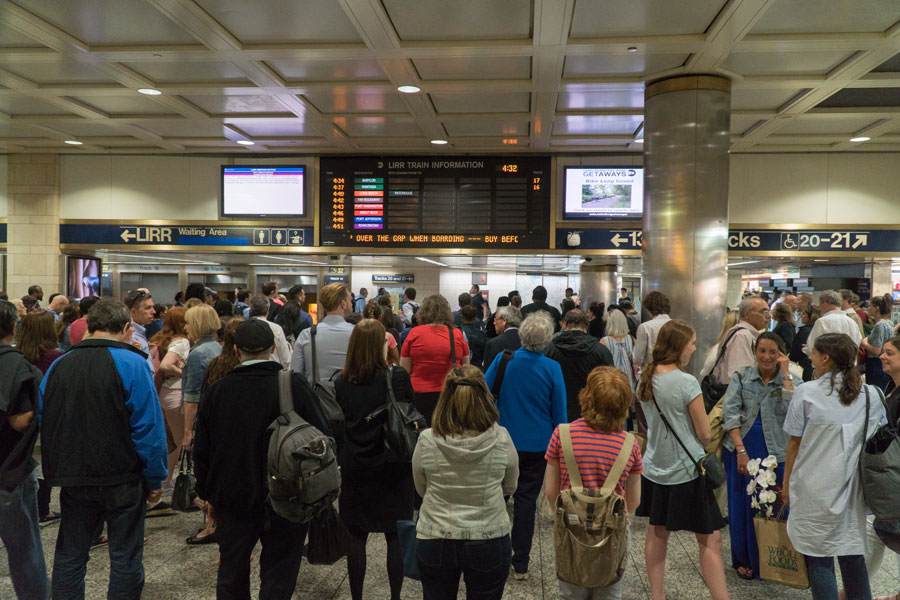
LONG ISLAND, N.Y. — A potential strike by Long Island Rail Road workers is drawing closer, with a key union set to announce the results of a strike authorization vote that could halt service for hundreds of thousands of commuters as early as next week.
The Brotherhood of Locomotive Engineers and Trainmen (BLET), representing train engineers, is voting on whether to walk off the job after contract negotiations stalled. Several other unions, including those representing conductors, signalmen, electrical workers, and machinists, are also involved in the dispute. Together, they account for nearly half of the LIRR’s 7,000 unionized employees.
Wage Dispute at the Center
At issue is a wage gap between what the unions are demanding and what the Metropolitan Transportation Authority (MTA) has offered. The unions are seeking a 16 percent wage increase over three years, while the MTA has proposed 9.5 percent over the same period. Some unions have accepted the MTA’s offer, but the holdouts argue it falls short of keeping up with cost-of-living increases.
The contracts under dispute cover six separate agreements, and the unions have emphasized that compensation and work rules are central sticking points. Critics of the current agreements say they allow for costly overtime and premium pay provisions that drive up expenses. In 2024, LIRR overtime costs reached $207 million, representing more than one-fifth of its payroll.
Timing and Potential Impact
If authorized, the strike could begin at midnight on September 18. That would immediately disrupt travel for an estimated 270,000 to 300,000 daily riders who rely on the LIRR for commuting between Long Island and New York City. More than 3,000 workers could walk off the job, crippling operations across the system.
The strike threat also looms just days before the Ryder Cup golf tournament at Bethpage State Park, scheduled to begin September 26. The international event is expected to draw large crowds, many of whom planned to travel via the LIRR. A strike could create major logistical and traffic challenges for spectators and the region.
Contingency Plans in Motion
The MTA has begun preparing emergency measures in case trains stop running. Plans include shuttle buses connecting select LIRR stations with New York City subway hubs during peak commuting hours. The agency is also considering refunds for monthly ticket holders if service is suspended, subject to board approval.
Officials say they are working to minimize disruptions, but alternative transportation would cover only a fraction of the daily passenger volume. Commuters would likely face longer travel times, congestion on highways, and limited parking availability at major transfer points.
What Happens Next
The outcome of the engineers’ vote is expected soon, with other unions already signaling their willingness to join a walkout if no progress is made. State and local leaders are closely monitoring negotiations, urging both sides to reach a deal to avoid a shutdown.
Whether the MTA raises its wage offer or the unions soften their demands remains uncertain. Absent a breakthrough, one of the largest commuter rail systems in the United States could grind to a halt within days, leaving Long Island residents scrambling for alternatives.
If the strike goes forward, it could disrupt travel for an estimated 270,000 to 300,000 daily riders who rely on the Long Island Rail Road. That’s nearly the entire weekday commuting population that uses the system to get between Long Island and New York City.
Snapshot QuickFacts: LIRR Strike Threat
| Detail | Information |
|---|---|
| Potential Strike Date | September 18, 2025 (midnight) |
| Workers Involved | ~3,000+ employees across six contracts, nearly half of LIRR’s 7,000 unionized staff |
| Unions at Center | Brotherhood of Locomotive Engineers & Trainmen (BLET) + conductors, signalmen, electrical workers, machinists |
| Union Demand | 16% wage increase over three years |
| MTA Offer | 9.5% wage increase over three years (some unions already accepted) |
| Daily Commuters Affected | 270,000–300,000 riders |
| Key Event at Risk | Ryder Cup at Bethpage State Park, Sept. 26, 2025 |
| MTA Contingency Plans | Shuttle buses to subway hubs during peak hours; possible prorated monthly ticket refunds |
| Overtime Costs | $207 million in 2024 (about 21% of payroll) |
LIRR Strike Q&A
Q: When could a strike begin?
A: As early as midnight on Thursday, September 18, 2025, if no agreement is reached.
Q: Which workers are involved?
A: About 3,000 employees represented by multiple unions, including engineers, conductors, signalmen, machinists, and electrical workers.
Q: What are the unions asking for?
A: A 16% wage increase over three years.
Q: What is the MTA offering?
A: A 9.5% raise over three years, which some unions have already accepted.
Q: How many commuters would be affected?
A: Roughly 270,000 to 300,000 daily riders depend on the LIRR, so disruptions would be widespread.
Q: What events could be impacted?
A: The Ryder Cup at Bethpage State Park, starting September 26, is a major concern since many fans planned to use the LIRR.
Q: What are the MTA’s contingency plans?
A: Shuttle buses connecting select LIRR stations with New York City subway hubs during peak hours, along with potential prorated refunds for monthly ticket holders.
Q: Why is overtime an issue in negotiations?
A: The LIRR spent $207 million on overtime in 2024, accounting for more than 20% of its payroll. The MTA says current work rules drive up costs.
Q: Could the strike be avoided?
A: Yes, if both sides compromise. Negotiations are ongoing, and state officials are pressuring both parties to reach a deal.


